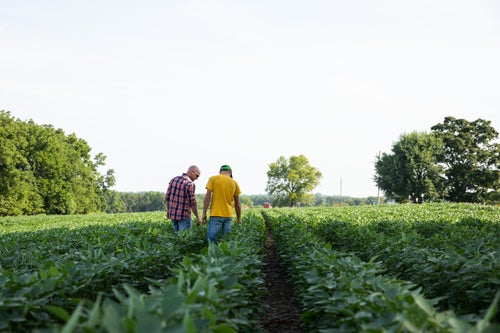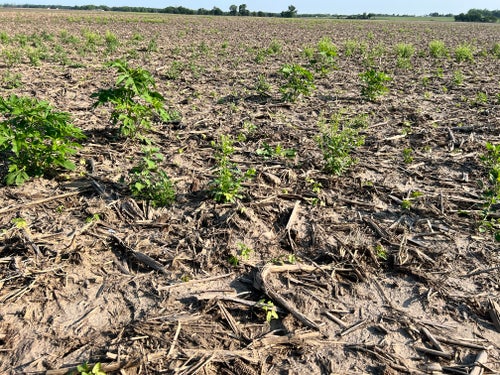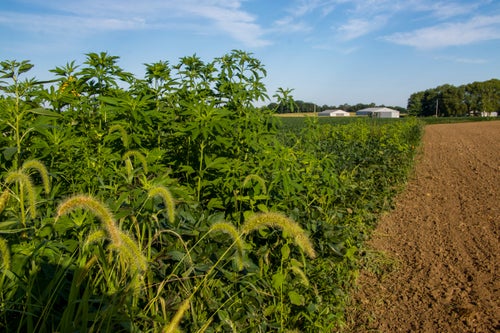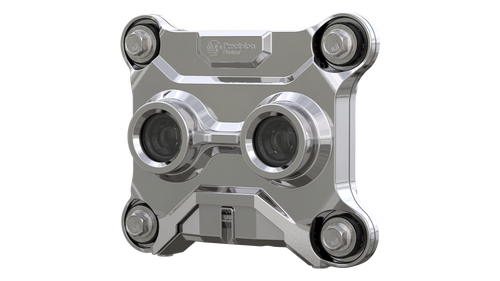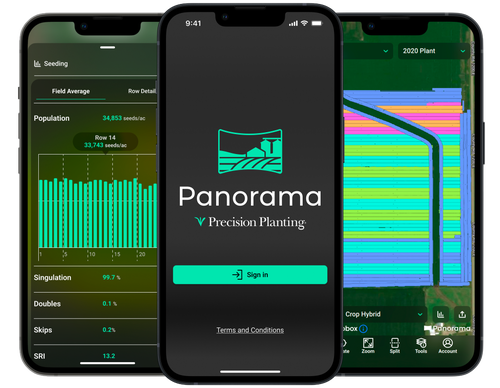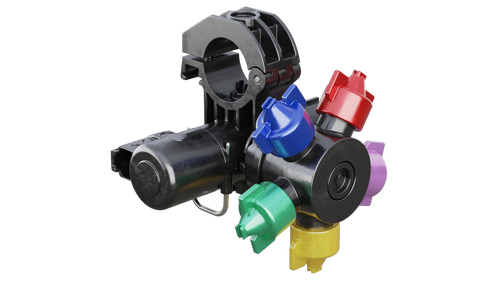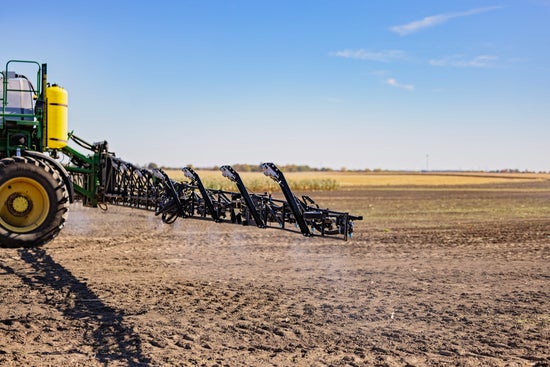
It’s no secret that scouting is a critical piece to your chemical weed control program, but is the scouting you're doing today providing you with enough information to make the data-driven decisions needed to optimize your program?
SymphonyVision, Precision Planting’s vision-based spray technology, not only optimizes your spraying workflow for greater return on investment but can greatly deepen the knowledge you have of your fields. Through added benefits like complete field coverage, year-over-year weed management, and improved communication across the farm, you’ll be equipped with more data and insights than conventional scouting efforts can offer.
Complete Field Coverage
Traditional scouting methods often only cover a small portion of the field. You go in the field entrance, make a loop, and may only see 10-15% of the field. This skews your perception of the weed pressure prevalent and may potentially lead you to make the wrong decisions.
With SymphonyVision, the cameras map the entirety of your field. You’re no longer making crucial decisions based on the random 10-15% you scouted. Instead, you’re considering most of those acres and intentionally addressing the key problem areas that were identified in the data recorded with SymphonyVision.
From the Field Example
Aaron Herrmann, Research Agronomist for Precision Planting, experienced this first-hand when scouting last season.
With familiarity of the field and his surroundings, he knew he could follow the railroad a bit northeast to access more of the field’s inner passes versus accessing the field from the road that runs across the south boundary of the field.
At first glance, this looks like a reasonable approach. Aaron had no reason to believe the section he scouted would look any different from other parts of the field. Sure, walking every pass of every field each season would be the most ideal. However, Aaron simply didn’t have the time for that (and surely neither do you).
After scouting and fine-tuning his chemical weed control program with the insights he gained during his time in the field, Aaron went out to spray. He was not expecting what he found in the northern half of the field. Unfortunately, Aaron quickly realized the scout path he took was a poor representation of the field as a whole.
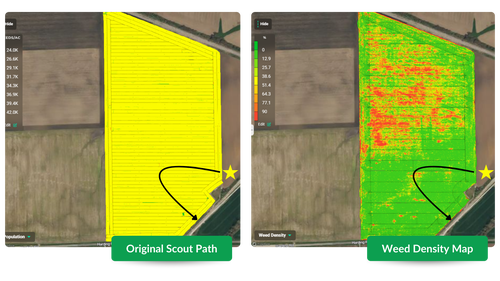
Since Aaron sprayed the field with SymphonyVision he was able to analyze the weed density maps afterward in Panorama and compare that to the path he took in the field while scouting. The map confirmed exactly what he saw while spraying.
With the weed density map now in-hand, Aaron can make the adjustments needed in his chemical weed control program to better target the areas of the field that experience the highest weed pressure.
Year-over-Year Weed Management
By mapping the entire field, SymphonyVision allows you to use last season’s data to get a head start on this season's decisions.
With your image database and weed density maps, you can identify the areas of the field that consistently experience high weed pressure year-over-year and start your scouting efforts there, skipping the areas of the field that aren’t as relevant.
Additionally, SymphonyVision gives you the data to know where to follow-up post spray pass to ensure a complete kill takes place.
Lessons Learned
Although Aaron learned a hard lesson last season, he won’t make the same mistake again now that he has crucial data in hand. Using the weed density map that SymphonyVision produced last season, Aaron can tailor his scout path to account for the areas of the field where weed pressure was the most prevalent.
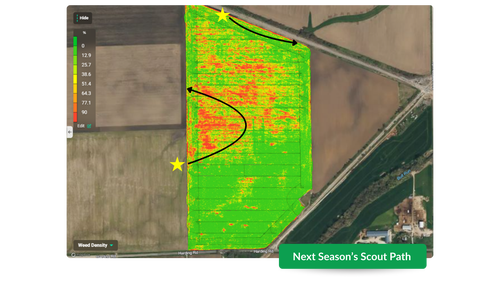
Thanks to the insights gained from the weed density map created by SymphonyVision, Aaron knows to target the middle section and northern perimeter of the field while scouting.
Improved Communication and Decision-Making
It’s not uncommon for operations to have multiple individuals involved in the chemical program and this variability can open the door for inconsistencies. When in the field operating, you may not be able to get a clear picture of what’s happening on the ground because you're busy ensuring everything is going as expected in the cab, potentially skewing your perception of the field.
Picture this scenario. It probably sounds familiar to what happens on your farm, too!
The dad of the farming operation went out to spray foliar products on the crop. While spraying, he took some notes on the current weed pressure in the field to share with his son, the decision-maker for the chemical program, once back at the shop.
The dad was happy to share that the field looked great and there didn’t seem to be much weed pressure at all. However, the son being the skeptic he is, decided to take a look at the maps and pictures captured by the SymphonyVision system. Those images gave the son an entirely different view of the field. He noticed substantial weed pressure in some areas and even noticed an area or two where the dad ran over a bit of the crop (maybe a downside for some operators).
Images and data captured by SymphonyVision gave the son the accurate picture of the field needed to allow him to make the decisions necessary for better weed management in the future.
SymphonyVision can bridge the communication gap present between scouts, sprayer operators, and decision-makers of the chemical weed control program by providing real-time weed maps and metrics to all involved in the operation.
More Than Just Scouting
SymphonyVision is available in two different packages, allowing you to select the best option for your operation.
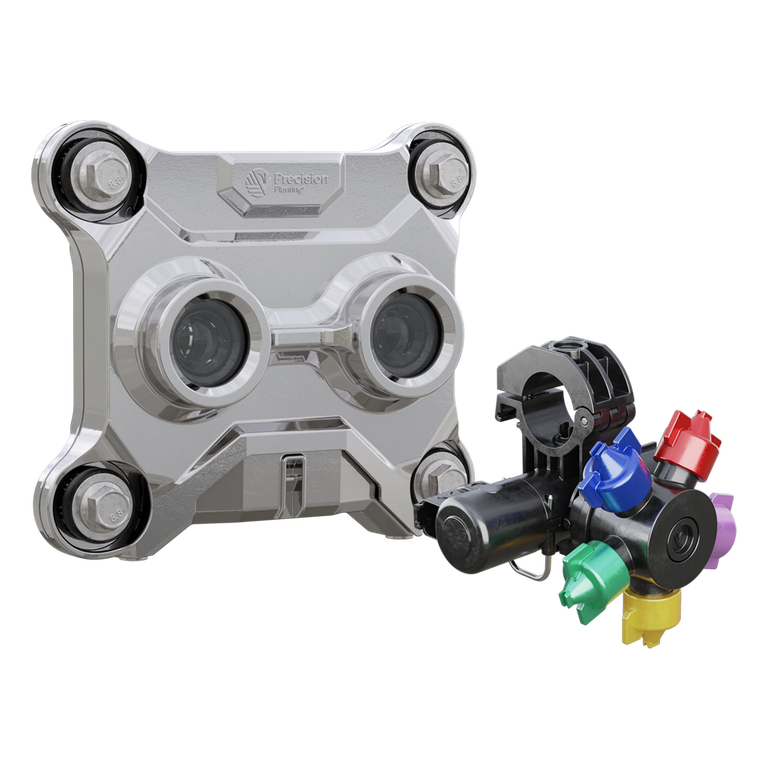
SymphonyVision | Rate uses weed severity metrics to automatically adjust rate while spraying. The system enables you to reduce the amount of chemical you’re applying without sacrificing weed control.
Suggested camera spacing is 10 feet.
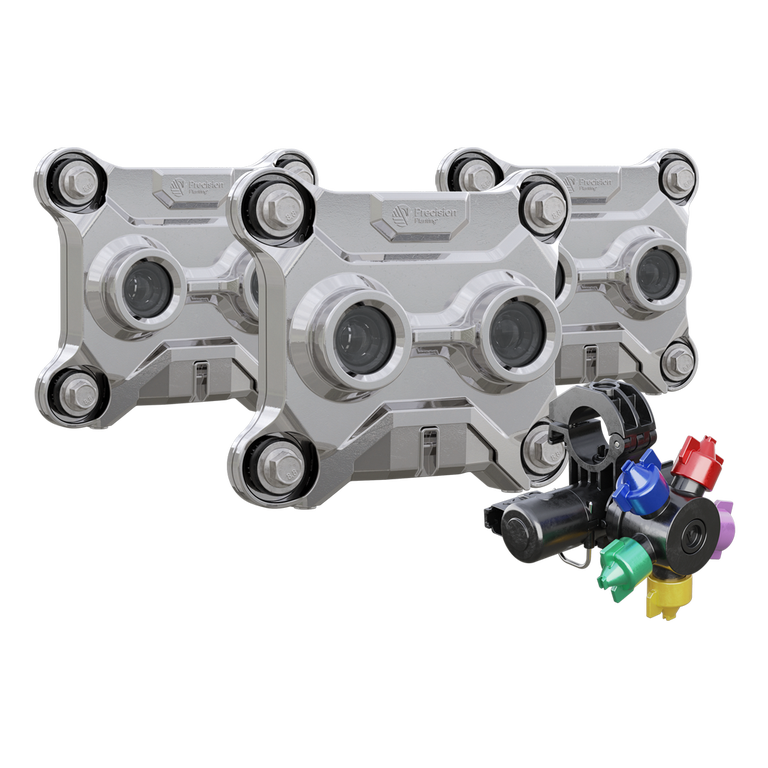
With SymphonyVision | Spot, the spray nozzles automatically turn on and off while also adjusting rate based on weed severity, allowing you to maximize your chemical savings and further improve the ROI of your chemical program.
Suggested camera spacing is 5 feet.
Whether you utilize SymphonyVision | Rate or SymphonyVision | Spot, you’re sure to find additional value in the scouting capabilities with each system. Take your scouting efforts to the next level and get the data you need to make the critical decisions within your chemical weed control program with SymphonyVision.
